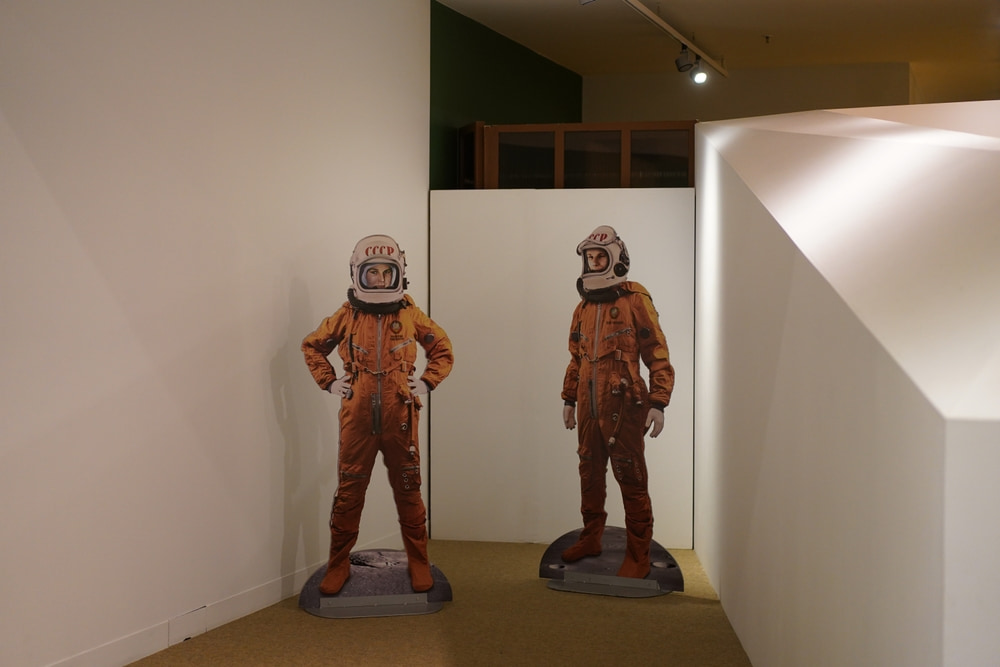
Valentina Tereshkova: Pioneer in Space Exploration
Noticias
On June 16, 1963, a momentous event occurred that would change the course of human history. On that day, Valentina Tereshkova, a young woman from humble beginnings, became the first woman to fly into space. Aboard Vostok 6, Tereshkova orbited the Earth for 71 hours, conducting a scientific mission that included studying the effects of zero gravity on the human body. While her name is forever associated with this groundbreaking achievement in space exploration, Valentina Tereshkova’s story goes far beyond the stars.
What makes her story even more remarkable is that, before this historical feat, Tereshkova was a textile worker with no formal scientific education and no military background. The young woman came from a modest family, yet her passion for parachuting and her determination led her to join the Soviet space program, where she would prove that women—traditionally excluded from science and technology—could also push the limits of human exploration. In this article, we will delve into the life, mission, and legacy of this great space pioneer.
Índice
Biography of Valentina Tereshkova
Early Years and Education
Valentina Vladimirovna Tereshkova was born on March 6, 1937, in Bolshoye Maslennikovo, a small rural village near Yaroslavl, in the former Soviet Union. Her family, from the working class, lived in humble conditions. Her father, a farm worker, died in World War II when she was only two years old. She grew up with her mother, who worked in a textile factory, and witnessed the economic and social challenges her family faced.
Despite these hardships, Valentina showed a strong aptitude for studying, learning, and persevering. After finishing primary school, she began working in the same textile factory as her mother, but she always maintained an interest in parachuting, a sport she would begin practicing in her spare time. By the age of 22, she was already an experienced parachutist, having completed over 150 jumps.
What Did Valentina Tereshkova Have to Do in Her Childhood to Go to Space?
Valentina Tereshkova’s dream of reaching the stars began with her efforts to overcome adversity. Not only did she have to work to support her family, but she also had to excel in demanding physical activities like parachuting, which was predominantly a male-dominated sport at the time. It was precisely this skill that led to her selection for the Soviet space program.
In 1961, after the historic flight of Yuri Gagarin, the Soviet Union decided to send a woman into space to demonstrate gender equality under the communist regime. Valentina, already an outstanding parachutist, was one of the women selected for this exclusive program. Her boldness, bravery, and determination were the qualities that allowed her to fulfill her dream of becoming a cosmonaut.
Beginnings in the Soviet Space Program
In 1962, Valentina Tereshkova was chosen, along with four other women, to be part of the Soviet female space program. Despite lacking a scientific background or military training, Tereshkova was selected for her physical skills and her ability to learn quickly. She began rigorous training to become a cosmonaut, which included extreme physical tests, high-altitude flights, and spaceflight simulations.
Although the other four women in the program were also in training, Valentina stood out among them. This was partly due to her humble background, as the Soviet government wanted to demonstrate that anyone, regardless of their social class, could contribute to science and technology.
First Female Astronaut: Vostok 6 Mission
Selection and Training
Valentina Tereshkova was eventually selected to become the first female cosmonaut in history. Her mission, Vostok 6, was launched on June 16, 1963. Prior to her flight, she underwent intense training, which included flight control studies, human physiology in zero gravity, and other technical aspects. During her training, she demonstrated a mental toughness that impressed her instructors.
Tereshkova became a symbol of Soviet ideology, representing not only personal achievement but also the progress of gender equality under communism. Her mission was not only a scientific triumph but also a symbol of female emancipation.
Mission Details
At 5:30 in the morning, the Vostok 6 rocket lifted off from the Baikonur Cosmodrome, and soon Valentina Tereshkova reached orbit. Onboard the spacecraft, her main task was to study the effects of space travel on the human body and conduct scientific experiments. During her 71-hour mission, she orbited the Earth 48 times, collecting valuable data about the effects of microgravity on the human body.
One of the most memorable moments of her mission was when, during her flight, Tereshkova established contact with her fellow cosmonaut, Valeri Bykovsky, who was aboard the Vostok 5 spacecraft. This rendezvous in space—the first-ever encounter between spacecraft—marked a milestone in space exploration.
What Did Valentina Tereshkova Discover?
During her mission, Valentina Tereshkova focused on observing and recording data about the effects of zero gravity on her body, and her experiences contributed to the understanding of how the human body responds to space conditions. While the experiments were not as detailed as those in later missions, her observations were an important step in advancing research on long-duration space flights.
Additionally, Valentina Tereshkova’s flight served as a demonstration that women, too, could play a crucial role in space exploration, helping to shift the world’s view of women’s capabilities.
Impact and Repercussions
Valentina Tereshkova’s flight was a resounding success, not only for its scientific contributions but also for its immense symbolic value. In the context of the Cold War, where competition between the United States and the Soviet Union in the space race was at its peak, the fact that a woman was sent into space showed the world that the Soviet Union was capable of unprecedented scientific advancements, regardless of gender.
The flight also demonstrated that women could contribute to scientific and technological progress in fields traditionally dominated by men, an important message at a time when access to certain professions was severely restricted for them.
Life After Space
Political Career and Social Contributions
After her historic flight, Valentina Tereshkova continued to be a prominent figure in Soviet politics. She was elected to the Supreme Soviet and later held positions in the Central Committee of the Communist Party. She also became an active advocate for women’s rights, promoting gender equality and women’s participation in science, technology, and politics.
Awards and Recognitions
For her contributions to science and her role as a pioneer in space exploration, Valentina Tereshkova has received numerous awards and honors. Among them are the title of Hero of the Soviet Union, the United Nations Peace Medal, and various international accolades in recognition of her work and sacrifice. She has received at least 80 awards and honors throughout her life.
How Many Awards Did Valentina Tereshkova Win?
Valentina Tereshkova has been one of the most recognized cosmonauts in the history of space exploration. Throughout her career, she has won more than 80 awards and distinctions, including honorary medals, titles of Hero of the Soviet Union, and international prizes for her contributions to science and gender equality.
Valentina Tereshkova Today
Today, Valentina Tereshkova remains a symbol of courage and perseverance. At over 80 years old, she continues to be active in political and social activities and remains an influential figure in science and technology. In 2013, she even expressed interest in traveling to Mars, reaffirming her unshakable desire to continue exploring the vastness of space.
Legacy and Influence
Contributions to Feminism and Gender Equality
Valentina Tereshkova’s legacy goes beyond her contribution to science. As the first woman to fly into space, her achievement was an inspiration to millions of women worldwide, showing that social and gender limitations have no place when it comes to aspiring to extraordinary goals. Her success inspired generations of women to engage in scientific and technological fields, opening doors to equality in places where it had previously been unthinkable.
Inspiration for Future Generations
Valentina Tereshkova remains a role model for future generations who dream of conquering space. Her story of overcoming adversity and bravery inspires children and adults alike to pursue their dreams, no matter how distant or impossible they may seem.
Conclusion
Valentina Tereshkova was not just the first woman in space, but her life and legacy have left an indelible mark on human history. From her humble beginnings to her conquest of space and her subsequent work, Valentina has proven that with determination and effort, any goal is achievable.
If you want to learn more about the fascinating world of space exploration and how figures like Tereshkova have shaped history, we invite you to explore other articles on ITAérea. Would you like to know more about the impact of women in science? Feel free to leave your comments and share your thoughts!
CONTACT info@itaerea.com +34 968 966 885 TEACHERS TRAINING




